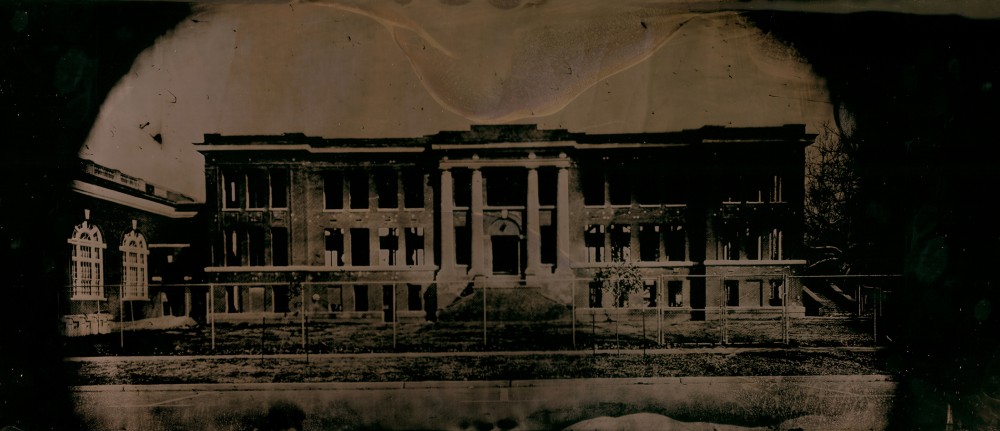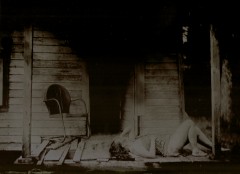New Gammill Gallery Exhibit of Wet Plate Collodion Photos by Euphus Ruth, Jr.
Through the Lens of an Antique Camera
Wet Plate Collodion Photography Exhibit in Gammill Gallery
 Euphus Ruth Jr. was born in Texas but from the age of two he was raised in Bruce, Mississippi. He has lived in the Mississippi Delta for over 30 years. He photographs using the wet collodion and film processes, and says he enjoys the complete photographic process, from visualizing the image through the ground glass to the final print or plate in the darkroom or mobile darkbox.
Euphus Ruth Jr. was born in Texas but from the age of two he was raised in Bruce, Mississippi. He has lived in the Mississippi Delta for over 30 years. He photographs using the wet collodion and film processes, and says he enjoys the complete photographic process, from visualizing the image through the ground glass to the final print or plate in the darkroom or mobile darkbox.
“My love of black and white photography began,” he claims, “by looking at old photos from my mom’s Kodak Brownie, which was kept in a box under the couch of our family home. I’m inspired by olden, forgotten, or remembered things and am intrigued by the earth’s reclamation, be it human or material. Most of my images since 2006 are made with wooden view cameras with antique and modern lenses, practicing the 19th-century wet collodion process. In my earlier work I used large-format film contact printed on Azo paper. I’m currently making wet collodion glass negatives for contact printing.”
Ruth explains that Frederick Scott Archer introduced the wet plate process—sometimes referred to as the collodion process, after the carrier material it uses—in 1851. His process involves dissolving a bromide, iodide, or chloride in collodion (a solution of pyroxylin in alcohol and ether). This mixture is poured on a cleaned glass plate, which is allowed to sit until the coating gels but is still moist. The plate is then placed in a silver nitrate solution, which converts the iodide, bromide, or chloride to silver iodide, silver bromide, or silver chloride. Once the action is complete, Ruth removes the plate from the silver nitrate solution and exposes it in a camera while still wet. The plate loses sensitivity as it dries, requiring him to coat and sensitize the plate immediately before use. It must also be developed while still moist, using a solution of iron sulfate, acetic acid, and alcohol in water.
 The sensitivity of silver halides to light is the underlying principle behind most types of 19th-century photographic processes—daguerreotypes, ambrotypes, tintypes, calotypes that use paper negatives, and wet and dry plate processes.
The sensitivity of silver halides to light is the underlying principle behind most types of 19th-century photographic processes—daguerreotypes, ambrotypes, tintypes, calotypes that use paper negatives, and wet and dry plate processes.
The exhibition of Ruth’s work, Through the Lens of an Antique Camera, will be on display in Gammill Gallery from February 2 to April 2. An artist’s reception, free and open to the public, is scheduled for February 24 at 4pm.
